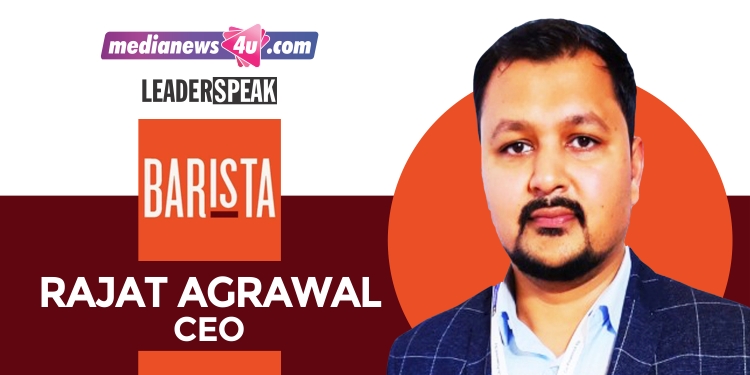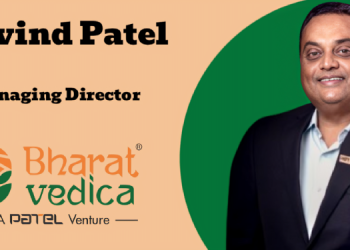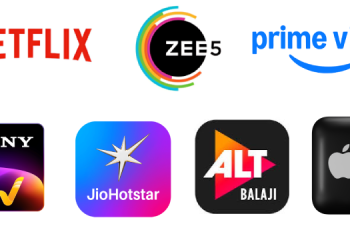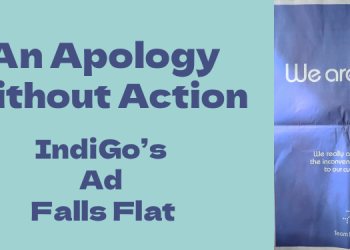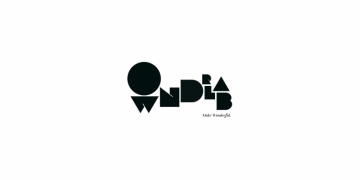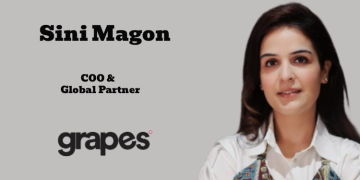Of the 320 Barista outlets in over 100 Indian cities, over 200 are in the North, about 50 in the South and around 35 each in the East and West. Is that the updated number? Does this reflect the potential of each region? What is the expansion agenda?
We are close to 350-odd stores. About 20 stores are in Sri Lanka and the rest in India. We are in over 100 cities. Our large traction is towards the North where a large part of development happened in the recent past. However, there is an aggressive plan to look at other regions as well.
India’s coffee appetite is growing. I would still not say that any of the regions in which we are operating have matured enough to not take up any more of our stores, or for that matter other coffee shops. India is evolving as a coffee nation. Compared to what it was 10 years back, the business has evolved, the use-cases have evolved. Now, coffee shops are not just a socialising place, they are places where people also do business, people work from cafes. There are multiple use cases today for a coffee shop, which is why the business is growing.
The good change we have seen in the last at least five years is that non-metros are also showing coffee appetite. Which is why if you ask me, the coffee journey for India has just started. There may be specific segments of business where we see there is large penetration, but I will still not say we have actually reached the optimised levels.
Of this there are 223 franchise stories, 60 of which are said to have opened in 12 months. Why should an entrepreneur choose a Barista franchise over another coffee chain?
You are going for a franchise because you do not want to do something from scratch and you want to run with something which has already been accepted in the market. So the vintage of the brand plays an important role. We are a 23-year-old brand, something not many can actually compete with us on. Plus, there has been a consistent history in terms of the brand being there and growing well.
Third is the industry type – the industry itself is growing well for anybody to believe that there is a huge appetite for the future.
If you were to put your money on a franchise business, Barista gives you that use case which is why the franchise model over the last four to five years really picked up traction. We see a very healthy pipeline and consistent growth. Now we are also looking at opening a lot of company stores. In the near future you will see a mix of both company and franchise stores.
Barista has been around since 2000. How has the profile of the customer changed between then and now?
20 years back, a coffee shop phenomenon was restricted to a certain niche level of clients. Coffee itself was growing on people’s palette. There were very limited takers for coffee and there was a very niche segment of people coming in.
Also, at that point of time there was virtually no competition because we were the pioneers. People did not have much choice like today when people are spoilt for choice.
Today a coffee shop is of value to a large set of audiences rather than a niche base. It is just not socialising-based, today it has more use cases than it had in the earlier past.
We as a brand also keep innovating so that we get the customer stickiness. Today 40 to 45 pc of our clients are loyal to us, which is a good percentage to have in the coffee category.
The customer today has far more choice and has had a lot of exposure than before. What are the large consumption trends that you are seeing now?
They are more educated in terms of various aspects of both their consuming patterns (thanks to the digital era) and also people are more well travelled now. The culture is not just restricted to metros today, it has gone into deeper roots of the nation, into Tier 2 cities.
There has always been milk-based coffee unlike the western countries where they are largely segmented towards black coffee. But, slowly and steadily, that culture is changing, there is a lot of preference around consuming black coffees. New-age coffees like cold brews are in demand, speciality coffees are in demand. And the new-age customer base is shifting their preference to some of these.
We have also re-engineered our portfolio to create opportunities around these segments. We have a large level of smoothies in our menu. It is not that everybody who comes to a coffee shop for a meet or greet, is a coffee consumer. There are a lot of non-coffee guys as well. So for that we have a large level of smoothies and shakes which also creates opportunities. Iced teas, mojitos etc. are again good to have and create value in our portfolio unlike some of the other coffee chains which are only restricting their portfolio to coffee.
Every HoReCa player also sells products today for home consumption. You sell everything from coffee power to drip coffee bags. Which are the bestsellers for Barista in that space?
Our coffee beans and powdered coffee are hot-selling products. Apart from that, some of the categories like sippers and mugs do well on a regular basis. We also have our festive range during Holi and Diwali, which is a gifting range. Cookies and chocolates which we sell under our label are high billing products for us.
Products like Barista Instant Coffee are available online on marketplaces and on your portal. How much of your sales is from online mediums and how much from physical stores?
Online sales is a recent phenomenon (for us). The online share is still in single digit as of now but we are definitely trying to put an effort to create an opportunity in that space. We are activating newer models. We are there on marketplaces, we are trying to kind of increase our bandwidths on these marketplaces and also in terms of going to multiple marketplaces. Also, we are offering products online directly on the Barista website. We are targeting at least a double digit percentage in the near future.
Tell us about the post Covid recovery, in numbers.
Pre-Covid to Post-Covid, we have added almost 150 stores. During Covid times also we were pretty active in terms of growing in the market. Today, we are at about 350 stores and out of that 150 stores have come in the last three years at about 50 stores every year. We are looking at such levels of growth in the near future as well.
Barista has always been known for its coffee but recently the company forayed into the live-kitchen space with Barista Diner. What was the idea behind this launch and how has it been received by consumers?
The way the Indian consumer is evolving, there is more and more appetite. There is a lot of opportunity you can see and sense in the market. Being a coffee shop, you restrict your working hours only to evening, afternoon, morning and a certain level of lunch and dinner crowd is being missed. So, we figured out that if we were to look at something which is an all-day-dining kind of thing, it helps you also be a lunch and a dinner destination. Considering we had a good equity in terms of our business, we thought of launching Barista Diner which is a fully live-kitchen, live-fresh food concept and catering to a larger set of audience of Indian cuisine with a bit of Italian in its portfolio. It appeals to a larger audience. Even if you are not a coffee drinker, a Barista Diner would appeal to you.
These diners are faring well. We are still in the journey trying to build the network. We are about only five or six stores in operation and we are trying to build a portfolio. The response to the initial ones that we had started had been encouraging and the idea is to now build it up in the near future.
Between Cafe, Diner, Express and Kiosks, what is the spread of each?
90 pc of our portfolio would be in the Cafe, Kiosk category. And then the balance inventory would be Express and Diner formats. The way things are shaping up, I see more Diners mushrooming soon.
In 2022 you had said that food averages around 25 pc of your sales. What is this number projected to settle at? Is there a global versus India number? Within India, is there a region versus region comparison?
At a brand level, we are at the range that you talked about. At a global level, I think the numbers are pretty similar. It is a close competition which I also keep a track of, staring at a certain number because most of the people who come to us at our store are largely looking at a beverage as a key enabler and food is an add-on opportunity. We are definitely trying to push the food agenda and to take it to 28 to 30 pc of our overall sales, that is our agenda.
If I were to look at from a food sales perspective, it is much more in Tier 1 and 2 than in metros because a metro is more a business use case. When you go to a mall, a large family is also coming in, which helps you sell more food than you typically sell in the metro stores. The differentiator is the kind of audience you are addressing rather than a region or a location. In a mall by default the food sales is more because it’s largely a family you are addressing.
The largest coffee chain in Sri Lanka; what other international markets is Barista looking at?
We are looking to capture the entire South Asia region which is Nepal, Bangladesh, Maldives and some of the other nations bordering India. We are also looking at our strategy for the Middle East and that is something which we are working on. We are looking at expanding to some of these markets in the near future.
With the market being flooded with a number of coffee players, both cafes and D2C, how is Barista standing out? What is the differentiating factor that lets you compete?
The growth in numbers is itself a statement on the way we are accepted as a brand. We are the fastest growing coffee chain in India today. A large set of competition has come down significantly over the last few years but we see that there is a big opportunity.
Coffee as an industry is growing and the acceptability of the products and the acceptability of coffee as something staple to your life is also increasing. That is again a good sign for the industry.
Walking ahead, staying ahead and also looking at innovating better than the competition is doing – I think that is the name of the game today. The good part is that we have also been able to cater to some of the metros and non-metros, Tier 1 and Tier 2 cities which other brands will take a bit of time to reach.
In terms of the footprint and the way we see the pipeline in the next 12 months to 15 months, we would still be the fastest growing cafe chain for at least a while now.
What kind of advertising budget does a coffee chain today have? Where is this spent?
It really depends on the stage of business you are in. For a startup, you would need more marketing funds to enable your growth. If you are a stable brand, you would any which way balance your portfolio to look at creating and spending wisely.
If I were to look at a spend perspective, today digital and social interaction, guest acquisition is becoming more and more important. Most of the spends are going in terms of creating a buzz around the social platform looking at techniques to acquire more customers and also creating a loyal set of guests. These are the two to three large ticket items which are important in terms of brand building today, for creating a stickiness from a consumer perspective.
According to media reports, Barista was planning to launch a vending and specialty coffee business. Have you launched these initiatives? If yes, how is the vending business performing and how has the been the response for specialty coffee?
Vending we have recently started, effective December. We have been able to push the agenda at a rapid pace. We are looking at scaling up that vertical in 2023 and 2024. We always had a lot of inquiries coming in because Barista has been a known brand for two decades now. The idea is to spread the brand in North India first and then scale up vending at a pan-India level.
There is a spurt in chai cafés in India in the last few years with brands like Chaayos, MBA Chai Wala, Chaipoint etc who are moving into the space dominated by coffee chains. Has it affected the overall coffee chain business in the country by claiming a share of wallet?
Some of the leading brands are there in terms of the chai space but we have our own set of clients and they have their own. Till the time both the industries are growing, that is a good sign for both of us. I am not sure of the kind of position they have versus what we have. We are still a lifestyle product, they are largely a mass product.
In most bigger trading markets, we are both operational. We are not seeing any impact of any chai cafes on our business.
(First published by The Free Press Journal BrandSutra under exclusive syndication arrangement with MediaNews4u.com. Feedback: [email protected])

